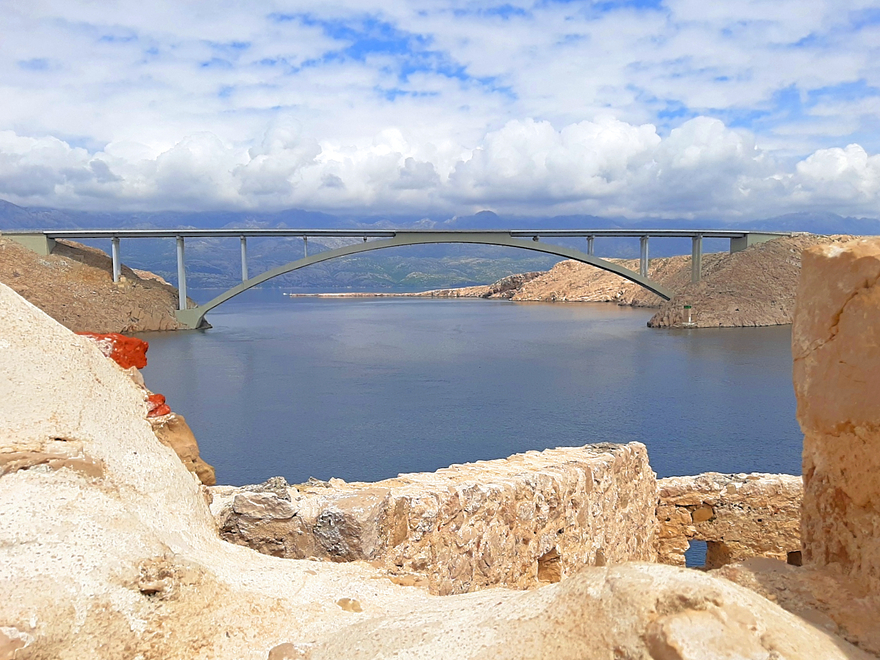
Why is Pag bridge closed and why ferry boat doesn’t sail?
“It’s so pleasant, you always have some kind of wind at the seaside.” That is a common statement we hear from tourists who visit the Adriatic coast in the summer months.
They enjoy the sun and gentle warm winds, which make even the hottest days more bearable. But what happens when a Bura storm wind hits?
The island of Pag has a sub-mediterranean climate, which is mild and warm. However, there is also the effect of continental climate and proximity of the Velebit mountain, the largest mountain in Croatia.
Especially in the colder months of the year, strong winds can blow from the mountain Velebit which we all in Croatia, and beyond, call Bura.
Formed on Velebit’s continental side, Bura descends the seaside slopes of the mountain at high speed to the sub-Velebit area.
It blows in spurts, meaning it doesn’t have the same intensity all the time. For those who have never experienced Bura, it resembles to strong draft when you open the doors and windows at the same time.
Suddenly, a strong current of air is created, and then when you close the door it decreases or even stops altogether.
Because of that occurrence, Bura is even more dangerous, because it calms down, and then a strong gust of wind starts all over. These gusts can blow more than 100-150 km/h and can blow off roofs, overturn cars, trucks, boats, and ships, or lift an adult person.
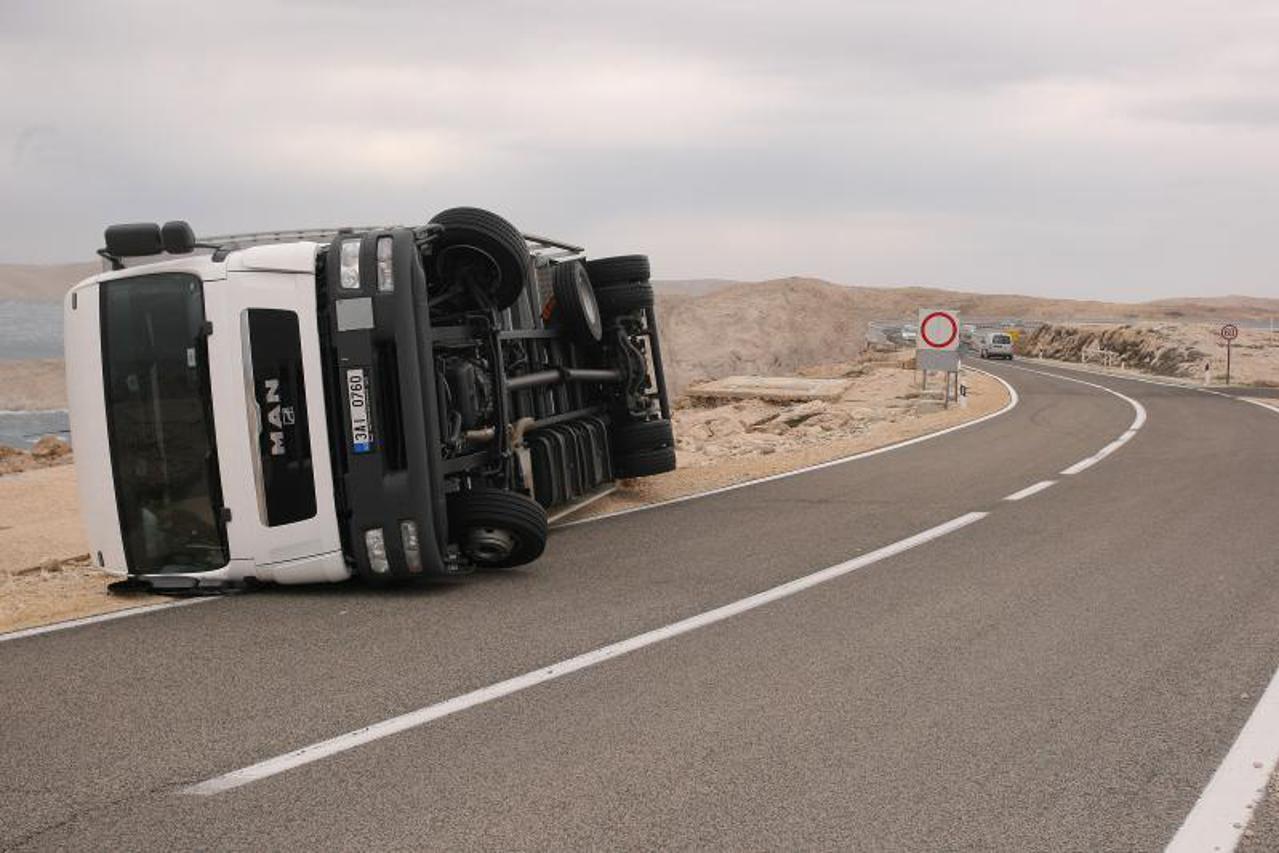
Truck was turned over by Bura just as he crossed the bridge. Photo: Večernji list
The Bura usually blows for about three days, in most cases it is stronger at night than during the day, but it is not a rule. It often weakens in the afternoon, sometimes stops, and starts blowing again at night.
Storm winds
The Bura stormwind usually comes extremely suddenly. Two years ago, just as we were about to welcome our first guests, we experienced the last Bura in March (there are usually three strong Bura’s in March). When we arrived two days earlier in Gajac, the southern wind, we call it Jugo, was blowing. It was pretty warm for the time of year.
Bura started very suddenly. In just half an hour, the weather changed completely. Clouds and wind came down over the island of Pag with such force that staying outdoors was no longer possible in just a few minutes. It was a fortune we knew it was coming because we were ready and removed all things that could be easily turned over or blown away.
When we decided to record this force of nature from our balcony and loggia, we had a hard time controlling standing still, and holding the cell phone in our hand.
Not every Bura has the same intensity, but during strong Bura, outdoor activities are very limited and even impossible.
The ferry boat Prizna-Zigljen doesn’t sail and the Pag bridge is closed.

Bura at Pag bridge Photo: Antena Zadar
Island of Pag – CLOSED
One of the biggest problems when it comes to the island of Pag and Bura is traffic. There are two ways to the island of Pag – Pag bridge and by ferry boat. During strong Bura, the ferry boat cannot sail.
Also, the bridge is often closed for several hours and can be closed for more than a day. Then a problem arises because the island of Pag is cut off from the mainland. It is not possible to get on or off the island. For all information and conditions on the road in Croatia check – HAK Traffic report .
Perhaps you can try to cross the bridge at your own risk, but this is not recommended for anyone, because Bura can overturn the car on the bridge. Also, it is not legal.
For example, countless cars may pass in front of you, and you will be the one to encounter a strong gust of wind, which can be fatal.
The smaller and lighter, or higher motor whiachles are at risk of overturning is greater.
Maybe some people won’t like what we talk about things like this, but that’s the reality of the weather. Conditions won’t change if we don’t talk about them. Bura is a force of nature that deserves our respect both at sea and on land.
Also, when strong Bura hits, you don’t want to be at sea no matter how much experience you have.
During the summer months, Bura is often very warm, like the wind from a hairdryer, while in the autumn, winter, and spring Bura can be very strong and cold.
Pag cheese and lamb
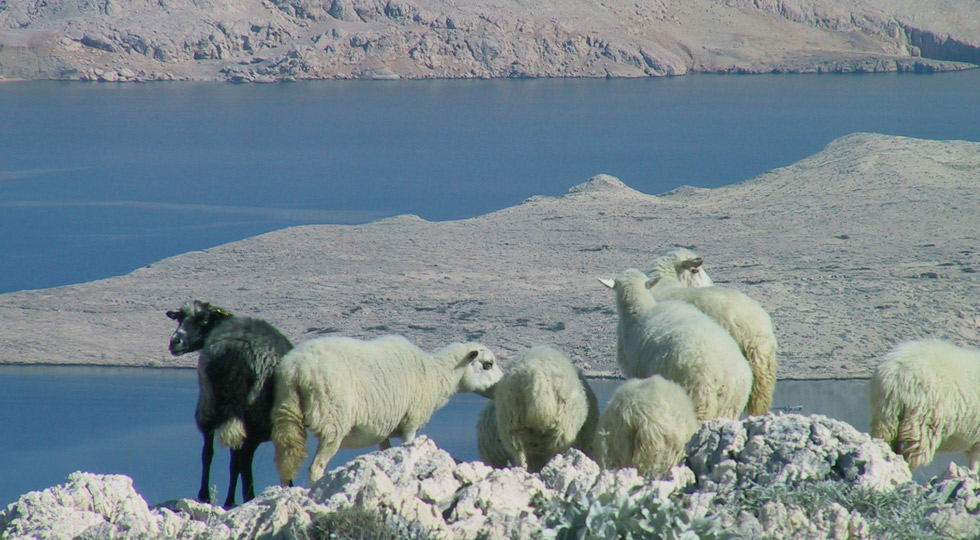
Photo: Lika-Senj County Tourist Board
However, if there were no Bura, the gastronomy of the island of Pag would not be one of the best in Croatia and known around the globe.
You are asking why. Well, Bura cools down, dries, preserves, and carries minerals from the sea. Because of that, locally grown foods have a superb taste and are recognized as one of the best in Croatia.
How it works? When blowing, Bura caries various minerals and salt from the sea, which remain on the vegetation. Then vegetation is grazed by sheep.
Thanks to aromatic herbs and minerals, cheese from sheep’s milk has a special aroma and taste and it is very healthy. Also, after the cheese is made, it is dried and matured on Bura wind for months or even years. Because of all those special conditions, it has top quality and taste.
The village of Kolan, located just a few kilometers from Kolanjski Gajac, is known precisely for the production of sheep cheese. The most known cheese factories are Gligora and MIH Kolan cheese.

Sheep cheese from Pag Photo: Glas Hrvatske
However, you can also find top-quality cheeses on numerous family farms in Kolan and all around the island. Don’t be afraid to buy locally.
The tradition of making cheese goes back several centuries and is passed down within the families from generation to generation.
The first records of sheep cheese date back to the 18th century, which means that it has been in the tradition for much longer.
Of course, the meat of Pag lamb itself is a delicacy for the same reasons. Unfortunately, lambs from Pag are pretty hard to come by because there are less and less local family farms.
Pag’s prosciutto and salt flower

Cheese, prosciutto, olives and melon from Pag / Photo: Antena Zadar
Pag’s prosciutto is no less famous. It is dried on Bura for at least two years.
Due to the salty environment brought by Bura, it has a taste that is recognized as the world’s top delicacy. You can eat excellent prosciutto in numerous local taverns in Pag and tavern Boškinac is certainly one of them.
Although the Bura is not the only one responsible for the production of the salt flower in Solana Pag, it is one of the important factors.
The salt flower is the best and healthiest part of salt and is also called “caviar” among salts. It is full of minerals from the sea that are important for the health of the body.
It is important to emphasize that the salt flower is not industrially processed, and it does not contain iodine or other industrial additives.
Wind Jugo brings rain and big waves
The opposite of the Bura is the south wind Jugo, a strong and warm wind that blows from the sea. More precisely from the south-east; Mediterranean sea and Africa. Except for the rain, Jugo often brings storms and big waves, which can be dangerous on the sea and land.
Unlike Bura, it is a continuous wind that usually does not blow as fast as Bura, approx. 40-50 km/h. However, storm surges are possible, reaching speeds of up to 110 km per hour.
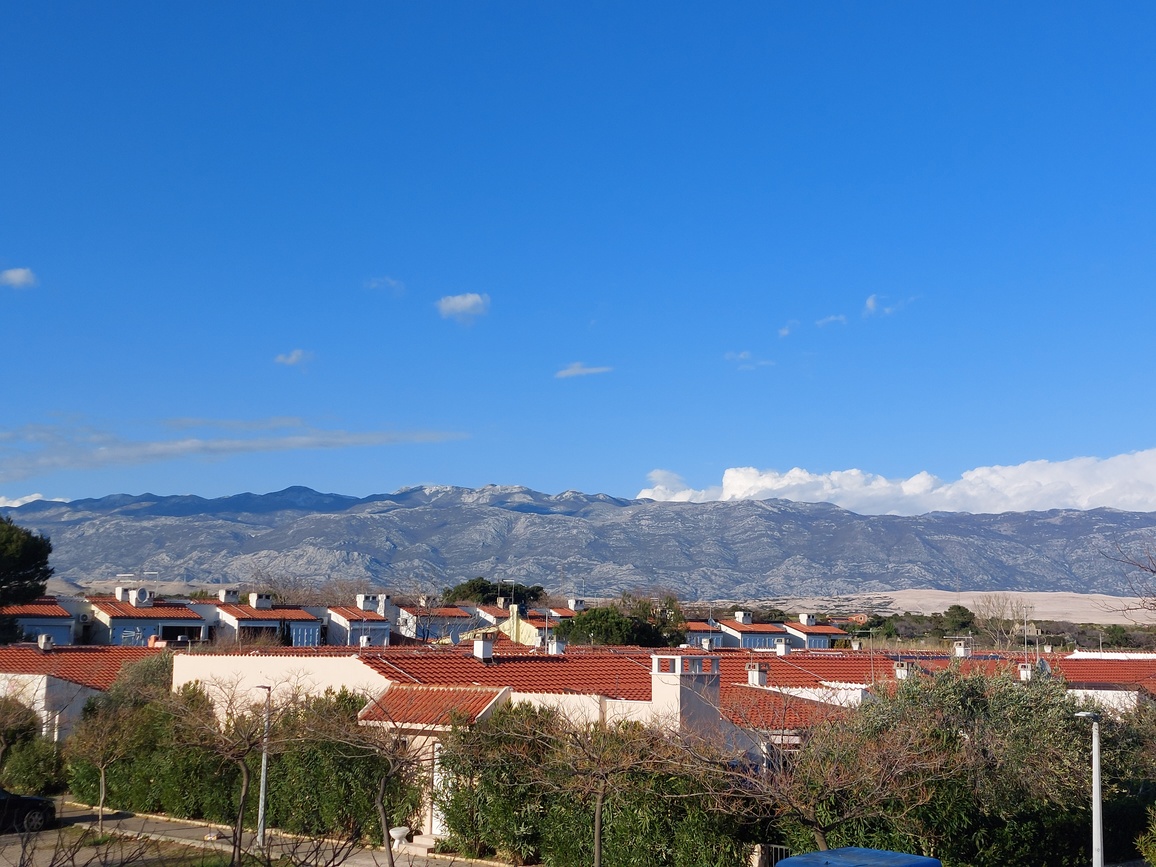
View on Velebit from our balcony after Bura.
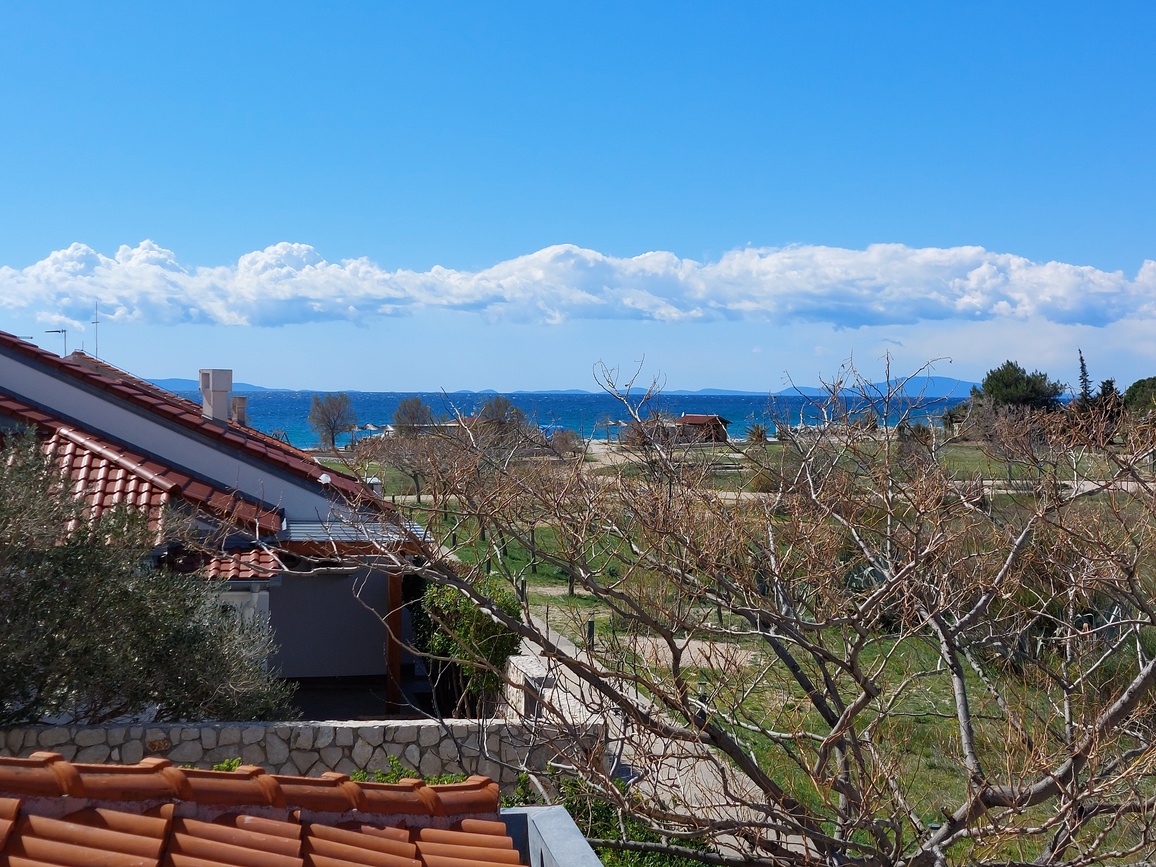
View on the beach, from our balcony after Bura.
Ge to know wind rose on Pag

Rose wind on Adriatic coast / Photo: Hlapićev portal
Of course, except for Bura and Jugo, on the entire Adriatic area, including Pag, there are many other winds you can expect. Locals can recognize them immediately.
Also, over time we have learned that several types of Bura’s can blow from different parts of Velebit with different strengths. Also, there are “dry” and “wet” Jugo winds.
Other winds are – grbin, levant, maestral, ostro, pulenat and tramontana. See the wind rose above. It can easily happen that winds are blowing in combinations.
Perhaps the most desirable wind in summer is maestral, which often blows during the summer heat and gives that great sense of comfort.


